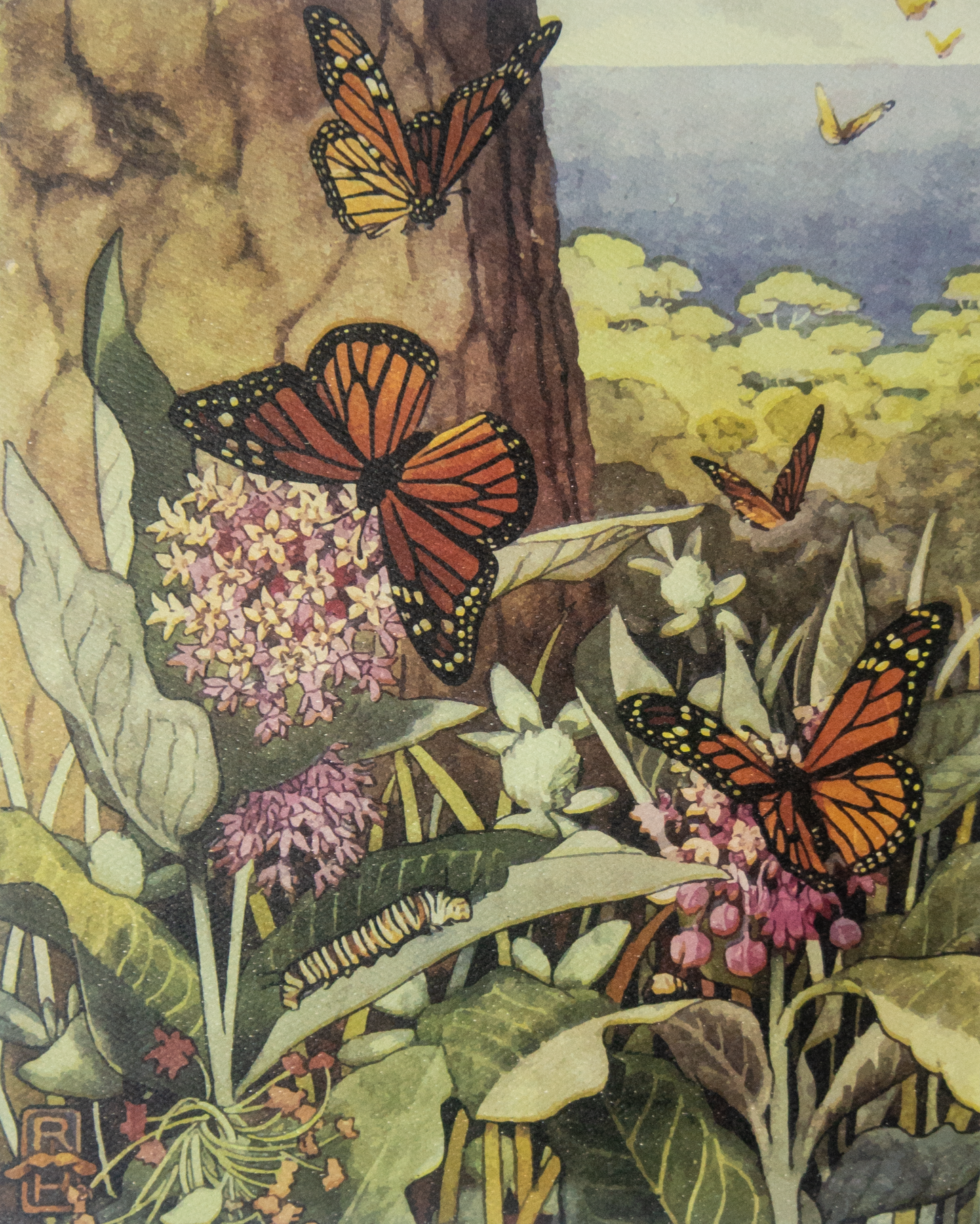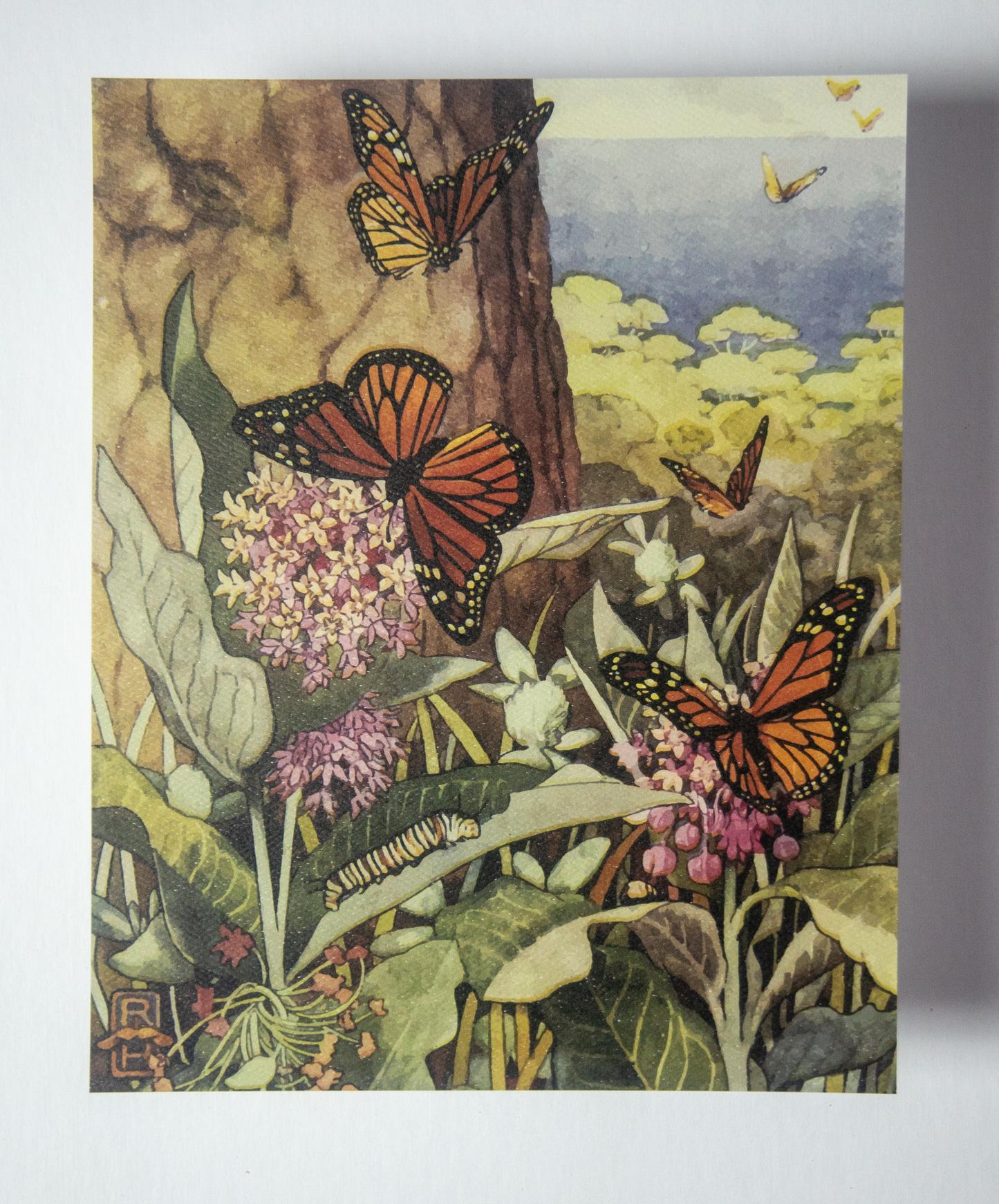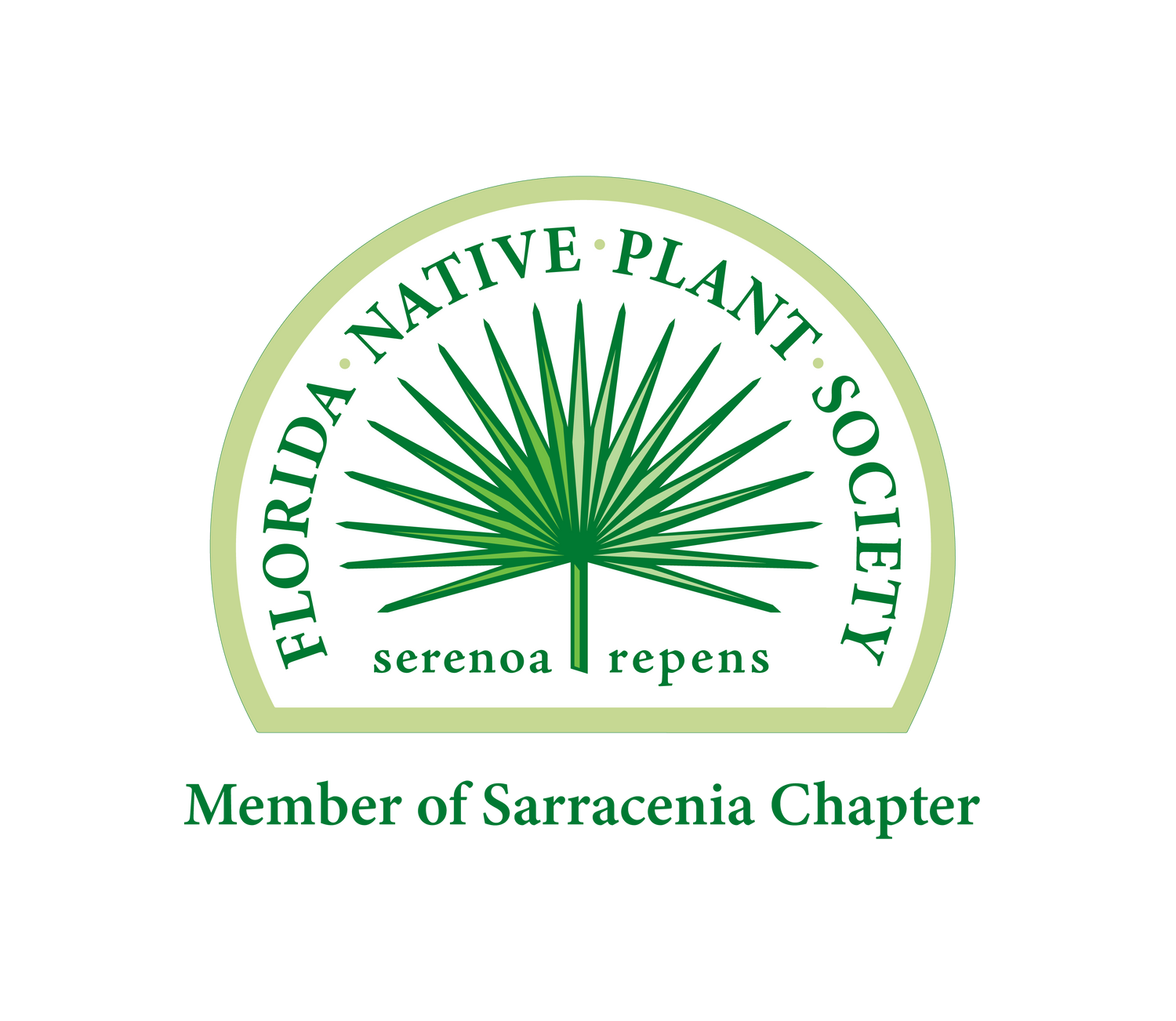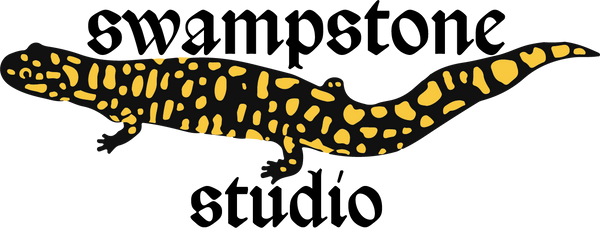Monarch Butterfly-King Billy (8x10in)
Monarch Butterfly-King Billy (8x10in)
Couldn't load pickup availability
This art print features an illustration by Canadian naturalist and illustrator, Robert Holmes, which was originally published in the 1916 book "Rambles of a Canadian Naturalist" by S.T. Woods.
The painting depicts endangered Monarch butterflies and their host plant, milkweed, which is an important food source for Monarch caterpillars. Milkweed plants (Asclepias) produce toxic cardiac glycosides to deter animals from consuming them. Monarch butterflies have evolved a specialized resistance to these toxins, allowing them to eat milkweed with little to no competition from other species. Monarch are unique because they are the only butterfly species that completes a two part migration, flying south to Mexico during the winter, and north to the united states and Canada during the summer.
There are over 70 species of Milkweed native to the United states, and 30 of those are frequented by Monarch butterflies. Each region of the US has its own list of local native milkweed species which flower at unique times of the year and under specific conditions which are crucial to the successful migration of Monarch Butterflies. As they migrate, there should be native milkweed flowers for them to use the entire way north and south so it is CRUCIAL to plant local ecotypes and native species so that you do not confuse migrating butterflies.
For information about the Milkweed native to your area click here!
-
8in by 10in art print
- Printed on premium felt woven watercolor paper
- Designed and printed in the USA
Share



Swampstone Studio proudly supports the Florida Native Plant Society!
Click below to visit the FNPS website to learn about Florida native plants and to find out how you can get involved with conservation and citizen science!
Not in Florida? native plant societies and clubs can be a great way to get involved with conservation in your area! click HERE for a list of native plant societies groups and organizations listed by state!


